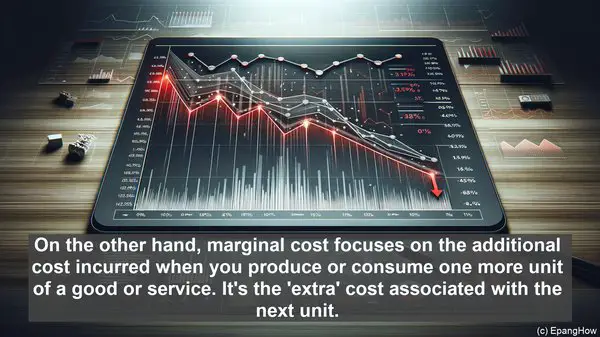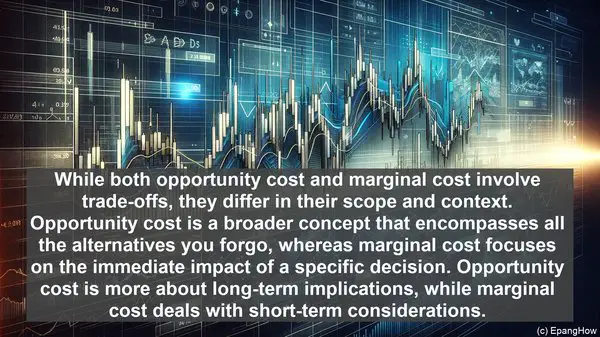Introduction: The Essence of Decision-Making
Hello, everyone! Decision-making is an integral part of our lives, whether it’s about personal choices or business strategies. When it comes to economics, two vital concepts play a significant role in this process: opportunity cost and marginal cost. While they might seem similar at first glance, they have distinct implications. Today, we’ll explore these differences and understand how they shape our decisions.

Opportunity Cost: The Road Not Taken
Imagine you have a limited resource, be it time, money, or any other factor. Every time you make a choice, you’re essentially forgoing the other options. Opportunity cost is the value of the next best alternative that you give up. It’s the ‘cost’ of not choosing the alternative. For example, if you decide to invest in a business, the opportunity cost could be the potential returns you’d have earned if you had invested elsewhere.

Marginal Cost: The Incremental Consideration
On the other hand, marginal cost focuses on the additional cost incurred when you produce or consume one more unit of a good or service. It’s the ‘extra’ cost associated with the next unit. Marginal cost is crucial in determining the optimal level of production or consumption. For instance, if you’re running a factory, the marginal cost of producing an additional unit includes factors like raw material, labor, and energy costs.
Comparing the Two: Scope and Context
While both opportunity cost and marginal cost involve trade-offs, they differ in their scope and context. Opportunity cost is a broader concept that encompasses all the alternatives you forgo, whereas marginal cost focuses on the immediate impact of a specific decision. Opportunity cost is more about long-term implications, while marginal cost deals with short-term considerations.
Decision-Making Insights: Balancing Act
Understanding these concepts is crucial for effective decision-making. In many cases, decisions involve weighing the opportunity cost against the potential benefits. By considering the marginal cost, you can assess if the additional benefit justifies the added expense. Striking the right balance is key. Sometimes, the opportunity cost might be too high, making an alternative more favorable, even if the marginal cost is lower.
